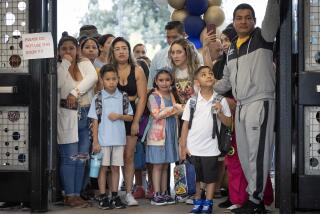Exposure therapy aids teens with PTSD, study finds

Teens who have been sexually traumatized benefit more from therapy that includes recounting the assault than from supportive counseling, a study suggests.
Such exposure treatment for post-traumatic stress disorder has had some success among adults. But it has not found favor for treatment of teens because of fear that it could exacerbate symptoms for young adults who have not developed robust coping skills.
Researchers at the University of Pennsylvania Perelman School of Medicine studied a modified form of the therapy tailored for adolescents. Over the course of six years, they randomly assigned 61 adolescent girls, ages 13-18, either to counseling or exposure therapy.
All received 14 counseling sessions of 60-90 minutes, and were evaluated at three months’ and six months’ time, then underwent a 12-month follow-up. Those who received the prolonged exposure showed a greater decline in PTSD and depression symptom severity during the treatment period, and greater improvement in overall function, according to the study, published Tuesday in the Journal of the American Medical Assn. The improvements were sustained over the one-year period, according to the study.
The counselors received four days of training in the program, designed by University of Pennsylvania clinical psychologist Edna Foa. In 2010, Foa and fellow researchers reported similar findings among 38 adolescent girls: about two thirds of those who underwent exposure therapy no longer met the clinical diagnosis of PTSD, compared with 37% who underwent psychotherapy.
Most studies of PTSD among adolescents have examined youth who were at risk, such as those living in violent circumstances. But a 2003 study based on a general survey of households with adolescents found that the six-month prevalence for PTSD was 3.7% for boys and 6.3% for girls. A survey of the broader population found that the 12-month prevalence among adults was 1.8% among men and 5.2% among women, according to the Department of Veterans Affairs.
A study of 108 randomly selected injured adolescents in 2002-2003 found that 19% to 32% screened positive for PTSD symptoms during a 12-month period after the injury.







